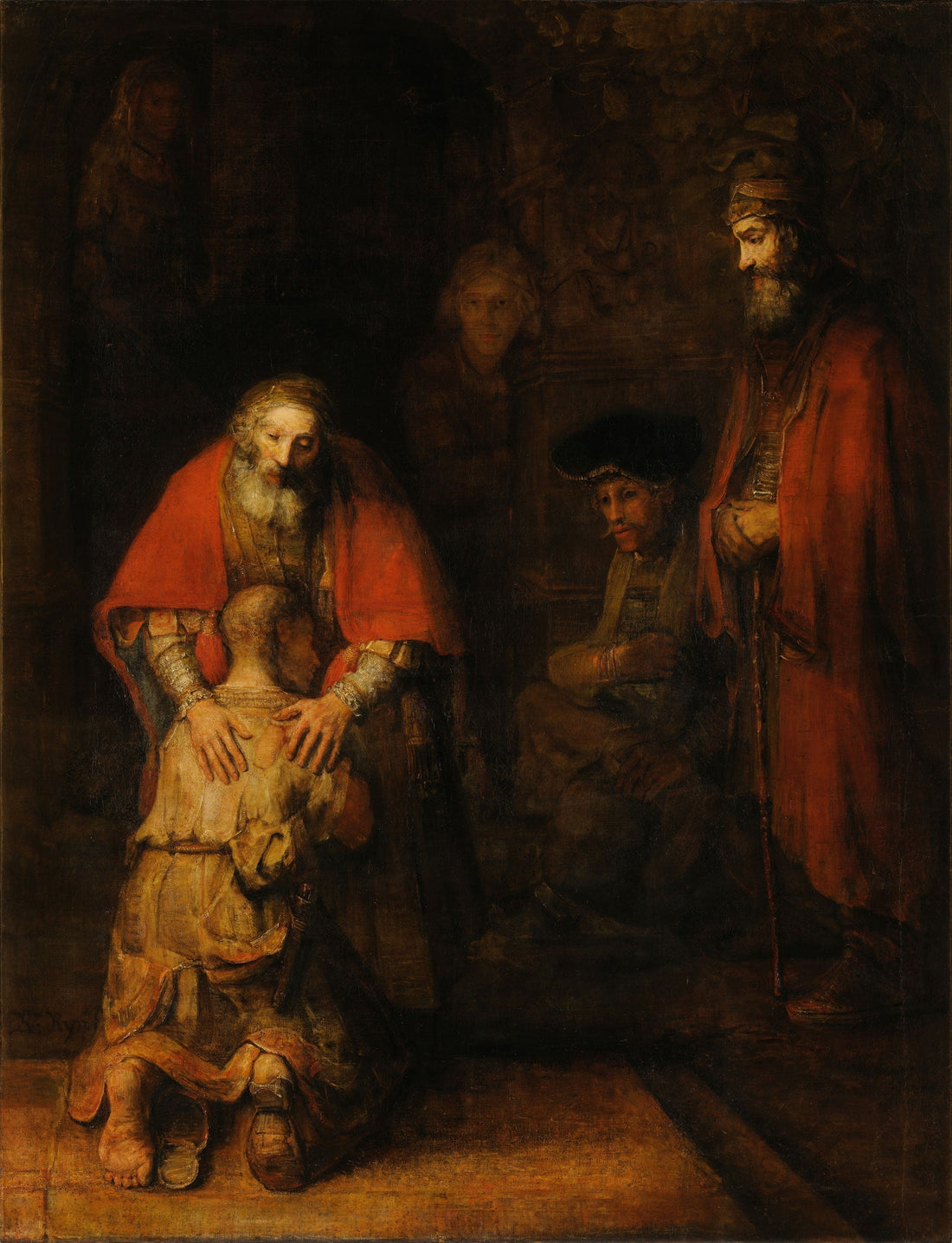
The Return of the Prodigal Son
Share
Rembrandt (1669)
Posted by M.T. Mitchell

One of the last paintings by Rembrandt is also his best. The Return of the Prodigal Son was finished the year he died in 1669. Rembrandt’s paintings are set apart by his
ability to capture emotion in the figures he painted. He does not narrate a biblical scene, he expresses it.
When Rembrandt was completing this painting, he was enduring the most miserable years of his life. He not only completely lost his family to illness and death (his wife, two daughters, and two sons) but he was also bankrupt.
Perhaps he paints the Prodigal Son because he knew what it was like to be a father who lost a son and he also knew what it was like to be destitute and outcast.
Because of this, the figures in the painting come to life because of their honest and human expressions. Thanks to Rembrandt, we can experience the human element in this biblical scene.
The Father
The father exudes a timeless peacefulness. Wrapped in his red robe, he is depicted with a deep sense of thanksgiving on his face. He finally has his son home, and he embraces the Prodigal Son with tender love. Rembrandt knew what this feeling would have been if only one of his own departed children were returned to him.
The Prodigal Son
The Prodigal Son wears threadbare clothing, a shaved head, and is visibly ill and suffering. The young man is depicted in complete abandonment to the Father. Rembrandt knew what it was like to be at the end of one’s rope, to give up on one’s life. He himself is “completely abandoning” himself to God as he is near the end of this life. One feels the son becoming a son once again, his eyes now closed, his body now limp, his return journey now over.
Rembrandt plays with light and darkness in the painting. The light is grace, and the shadow is sin. You will notice in the painting that the prodigal son is surrounded by the darkness of his head and body. But where the hands of the father touch him, a halo of light breaks the darkness, redeeming him.
The Elder Son
The stoicism of the elder son is apparent. Rembrandt paints the elder son to visibly look like a younger version of the father, both in the facial features, the body size, and the clothing (a red robe). The elder son may look like the father, but he is different and keeps his distance.
The inward struggle of the elder son is shown on the face. He has an expression of confusion and hurt. He can’t understand how the younger son can be home and be welcomed. This Prodigal Son was dead to the elder brother, and it’s as though the younger man is back from the grave.
The elder son harbors hatred and anger for the younger son. As Rembrandt plays with the light and the shadow, one can see that the elder son has a choice to make. Will he step forward into the light or will he step backward into the shadow?
This seems to be the choice we can also make ourselves. Will I step forward into the light? Or will the shadows that call me back into sin be the voices that I follow?
About the Author
M.T. Mitchell is the managing editor at Spirit of Wisdom Press. He is a Catholic author and speaker who holds humanistic, philosophical and theological degrees, specializing in Spiritual Theology.
He has written Generations of Grace, Sanctity Simplified, By Mercy’s Light and Volumes I & II of the All Things New commentary on the Catholic lectionary.
An avid oil painter and writer, he lives with his wife and son in North Carolina.